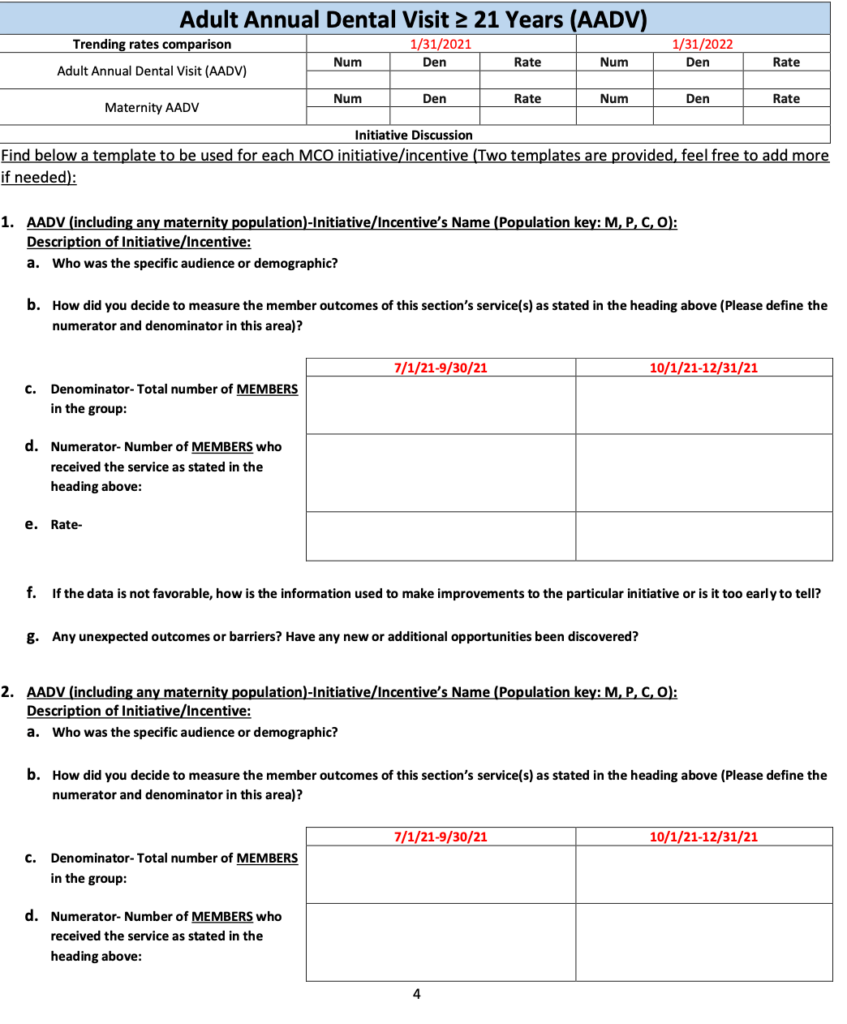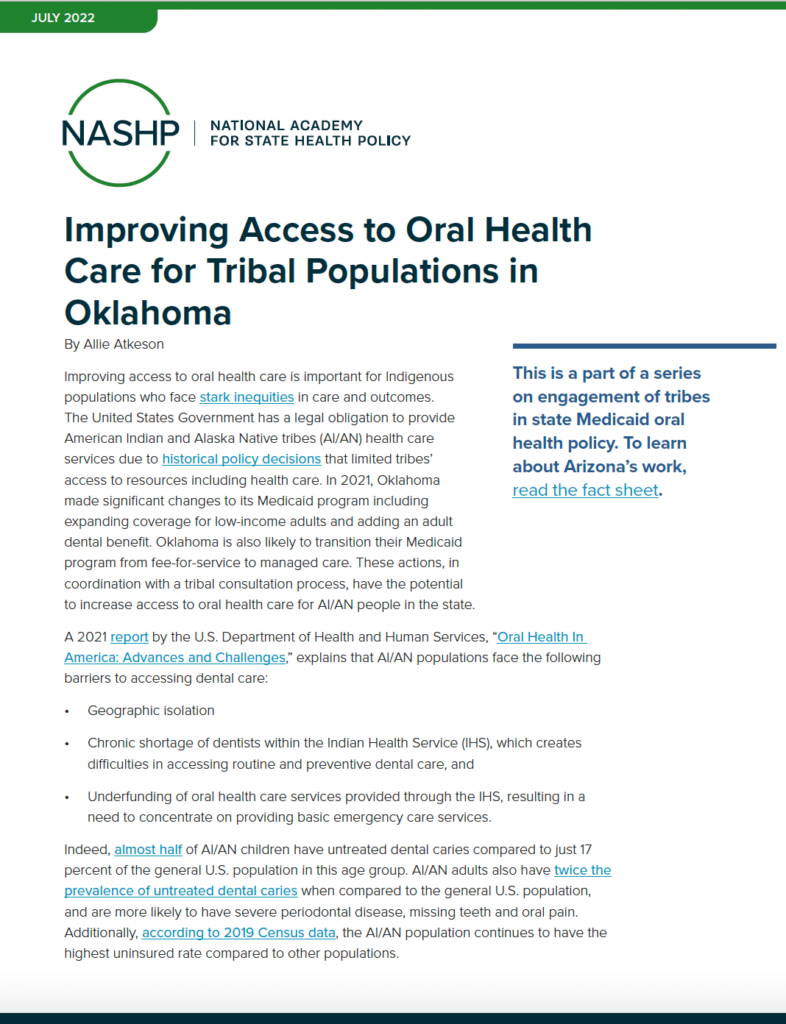The Affordable Care Act (ACA) requires health insurance plans to spend at least 80 to 85 percent (for large group plans) of an enrollee’s premium dollars on medical care and quality improvement rather than on administrative costs and profits. This is known as the Medical Loss Ratio (MLR). When the minimum standards are not met, an issuer must provide customers a rebate or refund of excess premium spending. A new state policy approach similarly establishes an MLR for dental insurers who have been historically removed from state and federal MLR requirements. Massachusetts is the first state to pass and approve a dental medical loss ratio as a way to require more transparency and accountability and increase access to quality dental care.
Dental MLRs may result in an increased understanding of dental insurance premiums and finance mechanisms, providing consumers greater transparency of the dental insurance market and improving access to high-quality dental services. Massachusetts’s dental MLR is part of a broader landscape of state efforts to ensure access to quality care while managing costs. Other states seeking to institute dental MLRs are beginning with data reporting and tracking of dental ratios before taking the step of requiring a minimum. As with all quality and cost management approaches, state oversight is warranted to ensure the intended goal of increased access to high-quality care.
Massachusetts’s Medical Loss Ratio Specifically for Dental Benefits
While states had historically imposed MLRs and other reporting requirements to promote more value in health plans, requirements were quite varied. Under ACA, as of 2011, all health plans are required to report state-level data across their plans in each market segment. However, dental insurance plans are excluded from the requirement.
In 2022, the Massachusetts electorate approved a ballot measure requiring the state to leverage the MLR mechanism by legislating compulsory MLR financial reporting rules for dental insurers and establishing the 83 percent loss ratio.
Massachusetts put the dental MLR question to the voters via a ballot measure (Question 2) during the 2022 general election. Question 2 was decisively passed with a 71.6% approval rate.
How Massachusetts’s Dental Medical Loss Ratio Will Work
Massachusetts is establishing a structure to limit formula increases that set premium amounts, requiring insurers to issue rebates if they exceed the 83 percent loss ratio, incorporating wide-ranging financial and operational reporting requirements, and making MLR determinations and data publicly available. Starting in 2024, the commissioner of the Massachusetts Division of Insurance will collect current and projected financial information from dental insurance plans and assess whether the dental loss ratio is being met or whether the insurer would be required to distribute a rebate.
| Massachusetts’s Proposed Dental MLR Structure |
| Directs the commissioner to approve or disapprove dental benefit plan rates. |
| Requires dental insurance carriers meet an annual aggregate medical loss ratio of 83 percent for their covered dental benefit plans. |
| Measures the amount of premium dollars a dental insurance carrier spends on its members’ dental expenses and quality improvements, as opposed to administrative expenses. |
| Requires carriers to submit current and projected administrative expenses and other financial information to the commissioner and submit a comprehensive annual financial statement itemized by market group size and line of business to the Division of Insurance. |
| Requires excess premium refunds to covered individuals and groups if the insurer’s annual aggregate medical loss ratio is not met. |
| Requires carriers to file group product base rates and any changes to group rating factors and gives the commissioner the authority to disapprove any proposed changes that are excessive, inadequate, or unreasonable. |
| Gives commissioner authority to approve dental benefit policies and adopt regulations determining eligibility criteria. |
| Imposes a late penalty for filers not meeting annual reporting on or before April 1. |
| Requires the Division of Insurance to make data publicly available and to issue annual summaries to certain legislative committees as well as to exchange data with the Health Policy Commission. |
The commissioner is required to promulgate regulations for these approved regulations by October 1, 2023, with the intention that the regulations go into effect on or after January 1, 2024.
Other States’ Dental MLR Approaches
In addition to Massachusetts, other states have made efforts to introduce dental MLRs. However, Massachusetts is distinct as the only state thus far to set the percentage limit. Other state approaches have been to require reporting and submission of the financial and administrative dental loss ratio data to the state without a standard rate or refund expectations.
In 2014, California began requiring dental insurance plans to report MLRs. The requirement did not set a standard MLR rate, and in 2014–2015, only 9 percent of plans were found to have matched the ACA standard. In West Virginia, SB 568 was enacted in 2022 and requires dental service corporations “to provide MLRs to the insured covering under 100 lives or less on an annual basis.” Arizona requires dental MLR reports by March 31 of each year. Dental insurers are required to submit subsequent reports detailing adjusted incurred dental claims, premiums, and fees within the state. In Maine, L.D. 1266, An Act To Require Dental Plan Medical Loss Ratio Reporting and Review, was signed into law in March 2022. Starting in 2023, dental carriers are required to submit dental MLR data to the state, which will release a report detailing the average MLR rate. Outlying plans may be required to create a remediation plan.
During the 2023 legislative session, at least two states introduced dental MLR legislation, with some attempting to set the MLR percentage. For example, Connecticut proposed the ratio be the same as its health plan MLR. Rhode Island has introduced legislation similar to Massachusetts, with MLR percentages in the 80s. These bills, however, have not yet been enacted.
NASHP will continue to monitor the implementation of dental MLRs across states. Please reach out to Megan D’Alessandro (mdalessandro@nashp.org) with any questions or updates.
NASHP is thankful for support of this project by the Health Resources and Services Administration (HRSA) of the U.S. Department of Health and Human Services (HHS) under the National Organizations of State and Local Officials co-operative agreement. NASHP also thanks state officials from Massachusetts for providing detailed feedback on this blog.






